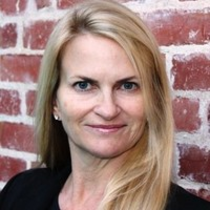“It’s not personal, it’s business.” How many times have you heard that phrase throughout your career? For the longest time, business success has gone hand in hand with a certain degree of toughness and ambition. After all, you’ve got competition to worry about, revenue goals to hit, and in many cases, investors to answer to.
On the turn of a dime, business can become cutthroat. You need to build walls to keep your company secrets safe — because if you don’t, you lose and your competitors win. Even within organizations, there is a tendency to separate processes and people and silo data and keep people in one lane or another.
But what if there was an alternative?
Elastic believes in that different way, and Kim Huffman, the VP of Global IT at Elastic, is helping the team to lean into the idea that an open, supportive, distributed system is the way forward. While most businesses keep a tight lid on their business by employing an aggressive and impersonal approach, at Elastic, everything is out in the open. With a distributed workforce and an open-source mentality, Elastic is giving everyone access to the most precious resource currently available.
But scarcity creates value, so when everyone has access to something valuable, is it still worth as much as we think? When everyone can win, does anyone really win? And with so much out in the open, how is Elastic continuing to innovate in new ways and stay ahead of the curve? Find out on this episode.
Main Takeaways:
- A Share of the Pie: With big world problems to solve, open-source and open innovation has proven to have huge potential, especially in a crisis. Embracing a collaborative approach does not only help to solve problems externally, a seed change from the us-vs-them mindset to a collaborative and open approach could promote similar behavior within companies and ultimately end in happier customers.
- Honesty Rules: Most people in senior leadership do not have people who hold a mirror up to them and tell them the truth. If you want the leadership team to grow and work toward the same goals, honesty with no repercussions is the route to building trust. Leaders should encourage openness and honesty and open themselves for feedback.
- Embed Empathy: The dog-eat-dog corporate narrative of the past has given way to the concept of empathy as the secret of business success. It is no longer being regarded as a soft skill. Human-centric strategies that focus on people first and sharing experiences have become more important.
- People-Centered Resilience: Building a resilient organization or company that can adapt to a crisis is all about the people. Give people the technology tools, information and support to feel engaged and communicate openly and transparently to build trust. With that kind of culture, employees will buy in, feel personally connected, and work hard when the company sees challenging times.
Key Quotes:
“This was a company that was focused on data as a company asset and the proliferation of data across organizations and bringing solutions that sped up the ability to search, observe whatever a company needed to do with data. How it was being used was especially exciting by customers like Airbnb to the federal government to Tinder. It’s all over the map. And so, it’s kind of exciting to have that breadth of a customer base. That was interesting to me.”
“It’s not all about doing the right thing; It’s about trying things. It’s about being humble and ambitious, because you can be humble, and you can be ambitious but really it’s about being humbly ambitious. How we treat co-workers, how we treat other employees, how we approach projects, it’s a very interesting culture, it’s a very empathetic culture and reading through the source code that kind of became apparent.”
“I think the trust on the leadership team is being open about how we feel about things. We address problem areas, and we don’t sugarcoat things. If there’s a problem, let’s raise it as a problem and figure out how we can tackle it. I’m like, ‘Hey guys we had a big miss, or we have a lot of problems,’ and saying, ‘This is the way I’m going to address fixing them.’”
“As a company, resiliency is not just about the business resilience, it’s about the people’s resilience. You can’t have a resilient business without resilient employees and people that are working in that business. And so, it maps very closely to how resilient are the people within the organization and how agile and flexible are they comfortable being.”
“Our leadership speaks a lot about the resilience of the organization and our founder, he has been very open and transparent and that’s how the company has been since I joined. We don’t have like, ‘Oh, only this group knows this.’ We share everything. And I think, during this time he shares a lot of personal perspectives about his feelings, and he had done that before, but I think he did that even more during this last year. And I think that is something that people have responded really well to, and I think he will continue to do that focusing on empathy and employees’ morale again, getting back to the people is part of that resilience. ”
“I realized the value of people in order for the organization to be agile and flexible and resilient. And if I don’t take care of the people, either through improving the employee experience across Elastic or building tools that are going to enable them to be more productive, or the people on my team and realizing that they are humans and we need to be empathetic and caring towards them or we’re not going to be successful as a company. For me, it all boils down to that.”
“We use most of our products internally, we call it Elastic on Elastic. So, we roll out all the products. We usually are in the beta mode, or pre-GA of products before they even go GA. And so, we will find issues and get those back up to the product team in mature products. And we’re like, yeah, it would be good to add this feature, take this feature out, or have you thought about this? And so, because we’re really like internal users of our products that are targeted to IT teams or IT functions.”
“We have a product called workplace search, which is targeted for IT leaders and basically allows you or a company to take all the content from a number of different sources and apply our search to it. And it’s fabulous because if you’ve got Slack, Gmail, Wiki, GitHub and you want to search it for X, Y, or Z – it’s very fast and it does it all. So, we rolled that out internally and as we were rolling it out, we were finding some connector issues with this or that. And we were just sharing that with the product team because when we roll it out to our customers, we don’t want them to have the same experience. As part of that feedback loop, they revved in some of the changes into the product release process which made it better.”
“I continue to be amazed. I mean, there was a post on LinkedIn last week about the Mars Rover and our product was involved in that. Elastic was involved in that. … John Hopkins was the big one with COVID when it first hit. The only limit is what people think of.”
Bio:
Kim Huffman is leading global IT at Elastic, which includes architecture, applications, collaboration tools, operations, infrastructure and compliance. She started her career in consultant roles at Arthur Anderson and Ernst & Young, before moving to the tech world where she was the Director of Technology at the Wedding Channel. Other work stints included Sybase, Adobe, SAP Americas and WageWorks and in 2018 Kim joined Elastic as Global IT VP just before the company went public. She is a founding member of FirstBoard.io – a group working to increase the representation of women on boards and is a Forbes Councils Member.
—
Business X factors is produced by Mission.org and brought to you by Hyland.
For over a decade, Hyland has been named a Leader in the Gartner Magic Quadrant for Content Services Platforms, leading the way to help people get the information they need when and where they need it. More than half of 2019 Fortune 100 companies rely on Hyland to help them create more meaningful connections with the people they serve. When your focus is on the people you serve, Hyland stands behind you. Hyland is your X factor for better performance. Go to Hyland.com/insights to learn more.




